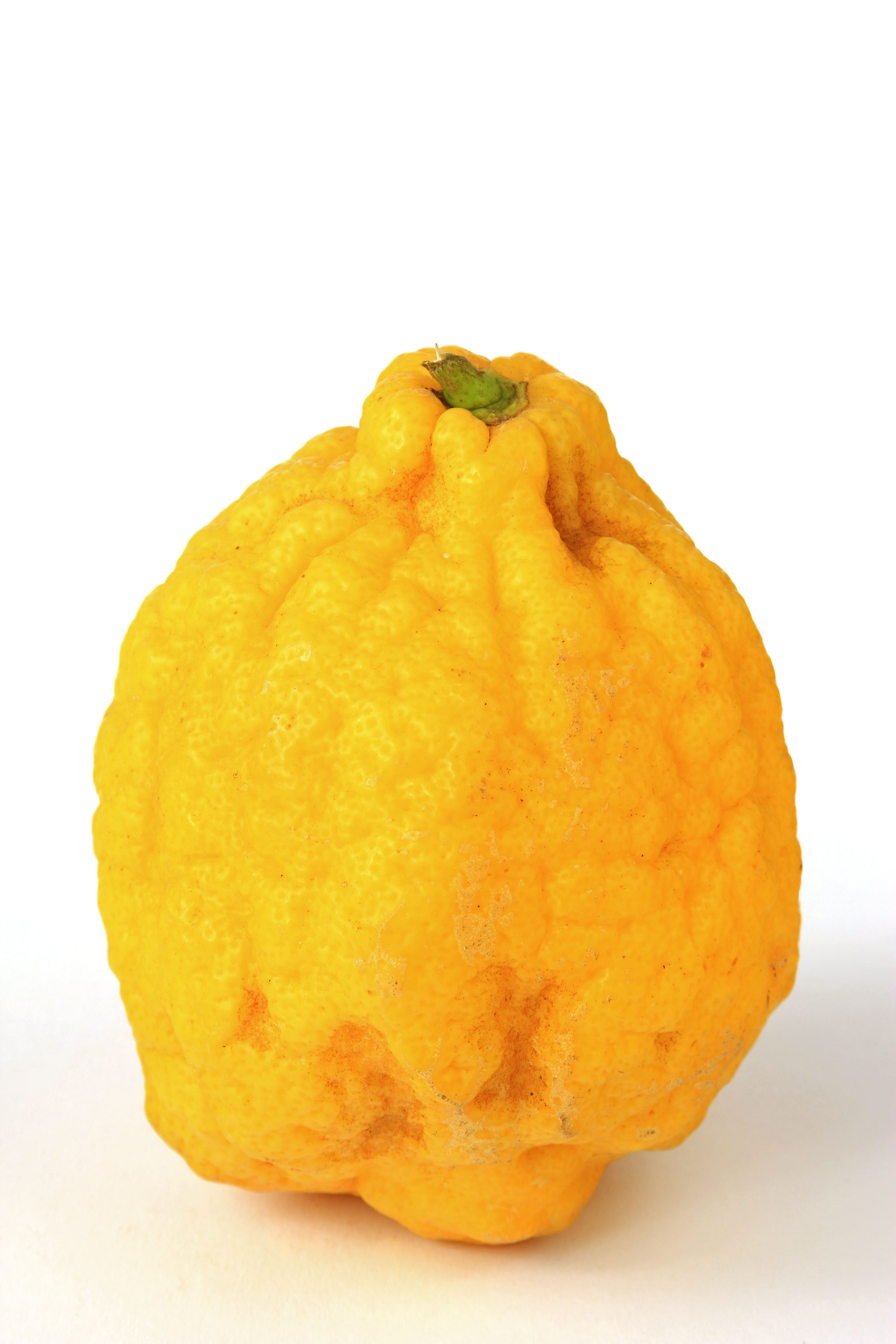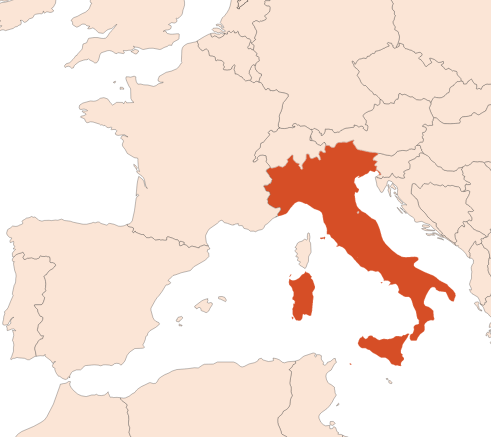Citron EO
Naturelle
Citrus > Zesty > Citric > Fresh Flowers > Sulfuric

Crédits photo: ScenTree SAS
Latin name :
Citrus medica
Botanical profile :
Citron is the fruit of the citron tree, belonging to the Rutaceae family and the Citrus genus.
Geographic origin :
Originally from East Asia, the citron tree is mainly grown in Sicily.
Chemotypes :
The genus Citrus includes the vast majority of citrus fruits and includes a large number of varieties available in perfumery:
Bergamot - (Citrus bergamia) is a hybrid of lemon and bitter orange, grown for the essential oil of its fruit and petitgrain.
Bitter orange or bigarade orange - (Citrus aurantium), grown in Spain and Florida.
Citron - (Citrus medica), grown in Italy (Sicily).
Lemon - (Citrus limon), cultured in Italy for the essential oil of its fruit and of its leafy twigs (Petitgrain).
Combava - (Citrus hystrix), grown in Thailand and India.
Lime - (Citrus aurantifolia), grown for its fruit in Mexico for the most part.
Mandarin - (Citrus reticulata), grown mainly in Italy for its fruit and for its petitgrain, by extracting the leaves from the tree. Its hybrid with sweet orange gave birth to clementine.
Orange - (Citrus sinensis) is famous for the cultivation of its fruits, whose juice and essential oil are extracted in Brazil and California in particular, which is the most used of all perfumes.
Grapefruit - (Citrus paradisii) of Malay origin, is cultivated for its essential oil in Brazil and Israel in particular.
Yuzu - (Citrus junos), produced in Japan and Korea.
Bergamot - (Citrus bergamia) is a hybrid of lemon and bitter orange, grown for the essential oil of its fruit and petitgrain.
Bitter orange or bigarade orange - (Citrus aurantium), grown in Spain and Florida.
Citron - (Citrus medica), grown in Italy (Sicily).
Lemon - (Citrus limon), cultured in Italy for the essential oil of its fruit and of its leafy twigs (Petitgrain).
Combava - (Citrus hystrix), grown in Thailand and India.
Lime - (Citrus aurantifolia), grown for its fruit in Mexico for the most part.
Mandarin - (Citrus reticulata), grown mainly in Italy for its fruit and for its petitgrain, by extracting the leaves from the tree. Its hybrid with sweet orange gave birth to clementine.
Orange - (Citrus sinensis) is famous for the cultivation of its fruits, whose juice and essential oil are extracted in Brazil and California in particular, which is the most used of all perfumes.
Grapefruit - (Citrus paradisii) of Malay origin, is cultivated for its essential oil in Brazil and Israel in particular.
Yuzu - (Citrus junos), produced in Japan and Korea.
Extraction process :
The cedar tree is a tree gives birth to the citron, a citrus fruit close to lemon, measuring up to 25 cm long and weighing 4 kg. The propagation of a cedar crop is done by cutting a plant aged of 2 to 4 years. The tree begins to bear fruit after 3 years of cultivation.
From September to November, the fruits are hand picked and placed in baskets to be brought to the factory. There, the baskets are weighed one by one and the fruits are sent to the sfumatrice. This machine prick the zest of the fruit with needles in order to cold press the essential oil. When thee zest debris, the juice and the essential oil come out of the sfumatrice, they are driven by a stream of water to a centrifuge where the water is separated from the oil and zest debris to isolate the essential oil by decantation.
Using a peeling machine (instead of the sfumatrice), the citron zest can be isolated and steam distilled to obtain an essential oil of ''distilled citron ''.
Sometimes the essential oil of citron can be distilled again to isolate the terpenes and concentrate the more powerful compounds or to collect the ''citron terpenes ''.
From September to November, the fruits are hand picked and placed in baskets to be brought to the factory. There, the baskets are weighed one by one and the fruits are sent to the sfumatrice. This machine prick the zest of the fruit with needles in order to cold press the essential oil. When thee zest debris, the juice and the essential oil come out of the sfumatrice, they are driven by a stream of water to a centrifuge where the water is separated from the oil and zest debris to isolate the essential oil by decantation.
Using a peeling machine (instead of the sfumatrice), the citron zest can be isolated and steam distilled to obtain an essential oil of ''distilled citron ''.
Sometimes the essential oil of citron can be distilled again to isolate the terpenes and concentrate the more powerful compounds or to collect the ''citron terpenes ''.
Major Components :
D-Limonene (55-60%)
Gamma-Terpinene (6-22%)
Citral (5-14%)
Geraniol (2-7%)
Nerol (2-6%)
Para-Cymene (≈1%)
Gamma-Terpinene (6-22%)
Citral (5-14%)
Geraniol (2-7%)
Nerol (2-6%)
Para-Cymene (≈1%)
- Uses in perfumery :
- Used in fine fragrance to give a lemony and zesty effect.
- Other comments :
- Citron is very little used because it has long been associated to ''old '' perfumes.
Since the production is not intended for food, the market tends to be a small one : there's little tonnage and prices are set accordingly.
Its use is not as common as it used to be, it has drastically decreased in recent years. Formerly, in Judaism, citron was one of the four species of plants used during religious holidays (citron branch for Sukkot, date palm branch for Lulav, myrtle branch for Hadass and willow branch for the Aravah).
Citrus currently suffer from a disease called ''citrus greening ''. This disease is deadly for citrus fruits and no treatment exists. It is transmitted by a vector insect that attacks young shoots: the psylla. This results in the premature death of many trees and therefore the decline in the general production of the essential oil and its quality (reduction of the D-Limonene level).
The sarcodactylis variety of citron is also called ''hand of bouddha '', because of its shape. - Volatility :
- Head
- Appearance :
- Pale yellow liquid
- Stability :
- Solubility issues in perfumes
Citruses tend to fade through time in perfumes
Limonene tends to convert into Carvone through time, and to give a minthy note to the oil
Aldehydes can form diethylacetals in stability tests, without modifying the raw material’s smell - Price Range :
- €€
- Aromatherapy :
Informations provided below are taken from reference works in aromatherapy. They are given for information purposes only and can not constitute medical information, nor engage the responsibility of ScenTree.
The citron has stomachic virtues (good for stomach digestion) and is recommended in cases of dyspepsia (digestive disorders of the stomach).

Crédits photo: ScenTree SAS
- EINECS number :
- 639-167-5
- FEMA number :
- Donnée indisponible.
- Allergens :
- D-Limonene - Citral
- IFRA :
- This ingredient is not restricted
To learn more about IFRA's standards : https://ifrafragrance.org/safe-use/library
ScenTree is solely responsible for the information provided here.

